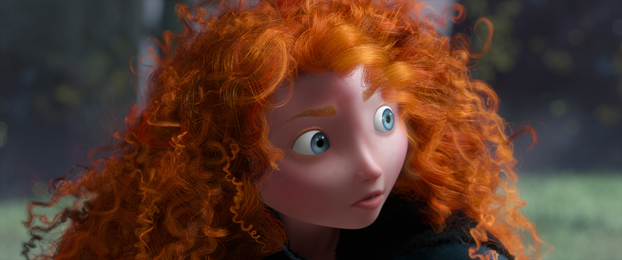
 |
 |
Artistic Simulation of Curly Hair Hayley Iben, Mark Meyer, Lena Petrovic, Olivier Soares, John Anderson, Andrew Witkin July 2013 Artistic simulation of hair presents many challenges - ranging from incorporating artistic control to dealing with extreme motions of characters. Additionally, in a production environment, the simulation needs to be fast and results need to be usable "out of the box" (without extensive parameter modifications) in order to produce ... [more] Available as Pixar Technical Memo #12-03b Other versions: |
 |
Feature Adaptive GPU Rendering of Catmull-Clark Subdivision Surfaces Matthias Niessner, Charles Loop, Mark Meyer, Tony DeRose January 2012 We present a novel method for high-performance GPU-based rendering of Catmull-Clark subdivision surfaces. Unlike previous methods, our algorithm computes the true limit surface up to machine precision, and is capable of rendering surfaces that conform to the full RenderMan specification for Catmull-Clark surfaces. Specifically, our algorithm can accommodate base meshes ... [more] Available in ACM Transactions on Graphics, January 2012. |
 |
Harmonic Coordinates for Character Articulation Pushkar Joshi, Mark Meyer, Tony DeRose, Brian Green, Tom Sanocki May 2007 In this paper we consider the problem of creating and controlling volume deformations used to articulate characters for use in high-end applications such as computer generated feature films. We introduce a method we call harmonic coordinates that significantly improves upon existing volume deformation techniques. Our deformations are controlled using a topologically flexible structure, called a cage, ... [more] Additional materials: [HarmonicCoordinates.divx], [SiggraphSlides.pdf] Available in the proceedings of Siggraph 2007. Available as Pixar Technical Memo #06-02b Other versions: |
 |
Key Point Subspace Acceleration and Soft Caching Mark Meyer, John Anderson May 2007 Many applications in Computer Graphics contain computationally expensive calculations. These calculations are often performed at many points to produce a full solution, even though the subspace of reasonable solutions may be of a relatively low dimension. The calculation of facial articulation and rendering of scenes with global illumination are two example applications that ... [more] Additional materials: [SiggraphSlides.pdf], [softCaching.mov] Available in the proceedings of Siggraph 2007 Available as Pixar Technical Memo #06-04b Other versions: |
 |
Statistical Acceleration for Animated Global Illumination Mark Meyer, John Anderson January 2006 Global illumination provides important visual cues to an animation, however its computational expense limits its use in practice. In this paper, we present an easy to implement technique for accelerating the computation of indirect illumination for an animated sequence using stochastic ray tracing. We begin by computing a quick but noisy solution using a ... [more] Additional materials: [ShotRender.mov] To appear in SIGGRAPH 2006 Available as Pixar Technical Memo #06-03 |